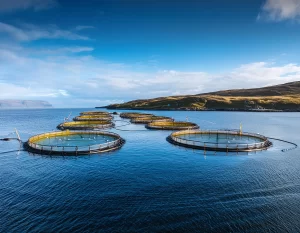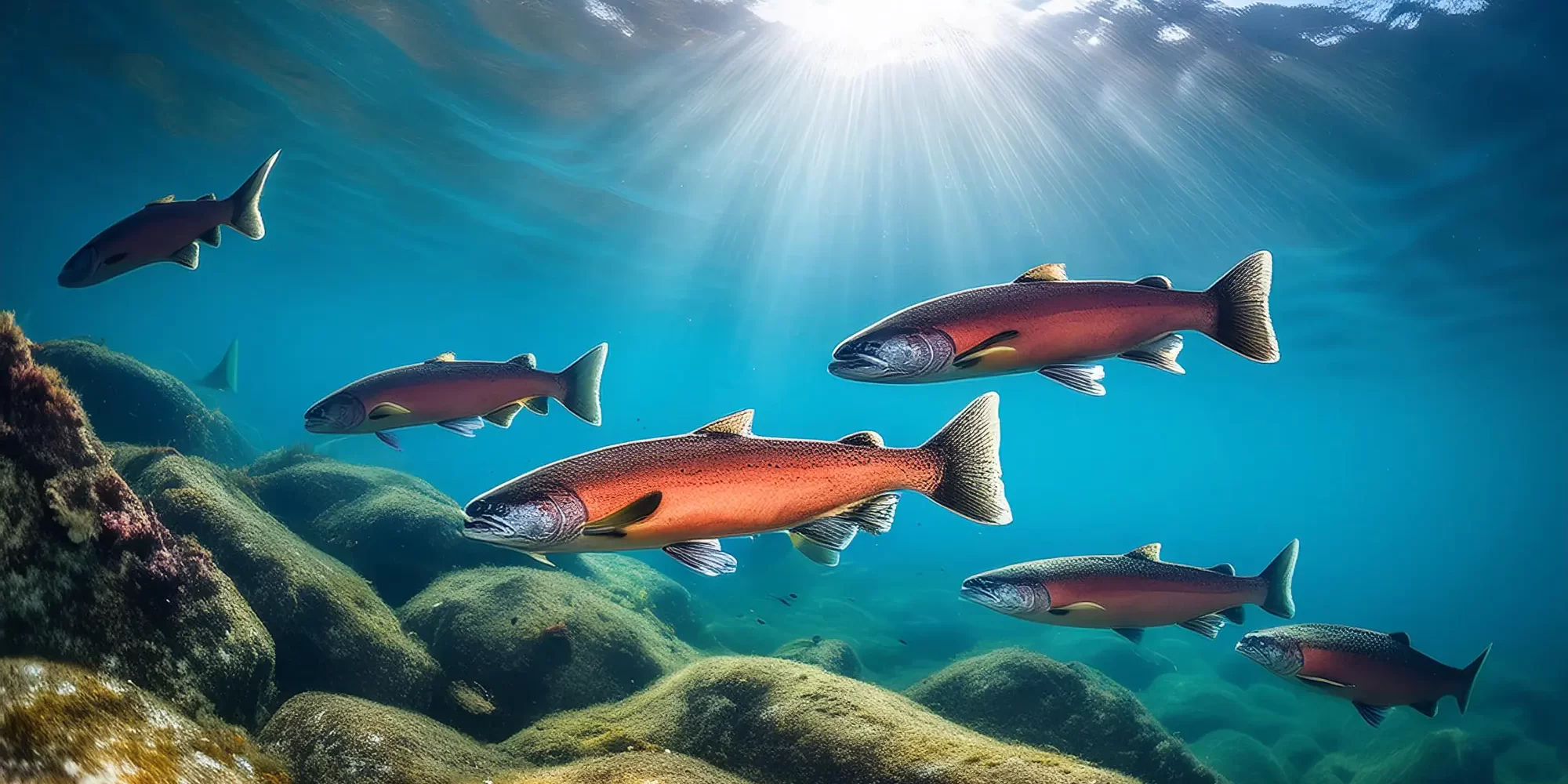In the aquaculture industry, maintaining optimal water quality is essential for the health and productivity of fish and other aquatic organisms.
Poor water quality can lead to disease outbreaks, reduced growth rates, and high mortality, significantly impacting the profitability and sustainability of aquaculture operations.
Chlorine Dioxide (ClO2) is an effective solution for controlling pathogens, improving water quality, and enhancing fish health and productivity in aquaculture systems. This article explores the application of Chlorine Dioxide in aquaculture and its benefits.
The Role of Chlorine Dioxide in Aquaculture
 Chlorine Dioxide is a powerful oxidising agent known for its broad-spectrum antimicrobial properties. It is highly effective against bacteria, viruses, fungi, and algae, making it an ideal choice for maintaining water quality in aquaculture systems. Unlike traditional chlorine, ClO2 does not form harmful by-products, ensuring a safer environment for aquatic life.
Chlorine Dioxide is a powerful oxidising agent known for its broad-spectrum antimicrobial properties. It is highly effective against bacteria, viruses, fungi, and algae, making it an ideal choice for maintaining water quality in aquaculture systems. Unlike traditional chlorine, ClO2 does not form harmful by-products, ensuring a safer environment for aquatic life.
Pathogen Control
Pathogens such as bacteria, viruses, and parasites are a significant concern in aquaculture. These microorganisms can cause diseases that lead to high mortality rates and decreased productivity. Chlorine Dioxide effectively controls these pathogens, reducing the risk of disease outbreaks and ensuring healthier fish populations. ClO2 is effective against a wide range of pathogens, including those that are resistant to traditional disinfectants. This comprehensive pathogen control ensures a healthier environment for fish. Chlorine Dioxide targets the disulphide bonds in the cell walls of microorganisms, disrupting their metabolic processes and effectively killing them. This selective oxidation makes ClO2 highly effective at low concentrations.
Improving Water Quality
Maintaining good water quality is crucial for the health and growth of fish. Chlorine Dioxide helps improve water quality by oxidising organic matter, reducing harmful compounds, and controlling algae growth. Organic matter such as fish waste, uneaten feed, and decaying plant material can accumulate in aquaculture systems, leading to poor water quality. ClO2 oxidises this organic matter, reducing its levels and improving water clarity and quality. Chlorine Dioxide effectively reduces harmful compounds such as ammonia and nitrite, which can be toxic to fish at high levels. By controlling these compounds, ClO2 creates a safer environment for aquatic organisms. Excessive algae growth can deplete oxygen levels in the water and produce toxins that harm fish. ClO2 controls algae growth, maintaining a balanced ecosystem and ensuring adequate oxygen levels for fish health.
Enhancing Fish Health and Productivity
By controlling pathogens and improving water quality, Chlorine Dioxide contributes to better fish health and higher productivity in aquaculture operations. Healthier water conditions reduce stress on fish, making them less susceptible to diseases. This leads to lower mortality rates and higher survival rates, enhancing overall productivity. Fish raised in cleaner, healthier water environments tend to grow faster and more efficiently. ClO2 helps create optimal conditions for growth, leading to higher yields and better profitability. Chlorine Dioxide is safe for use in aquaculture when applied correctly. It does not leave harmful residues in the water or on the fish, ensuring the safety of both the fish and the end consumers.
Implementing Chlorine Dioxide in Aquaculture
To effectively use Chlorine Dioxide in aquaculture, it is important to have the right equipment and protocols in place. This includes installing reliable ClO2 generators to ensure consistent production and dosing of Chlorine Dioxide in the water. Continuous monitoring of water quality parameters such as ClO2 levels, pH, and temperature is essential to maintain optimal conditions. Determining the correct dosing levels based on water volume, fish density, and specific needs of the aquaculture system is crucial for effective treatment.
Chlorine Dioxide is a valuable tool in aquaculture for controlling pathogens, improving water quality, and enhancing fish health and productivity. Its broad-spectrum efficacy, ability to improve water conditions, and safety make it an ideal choice for modern aquaculture practices. By implementing ClO2 in their water treatment protocols, aquaculture operators can ensure healthier fish, higher yields, and more sustainable operations. For more information on how Chlorine Dioxide can improve your aquaculture systems, contact Scotmas today.






